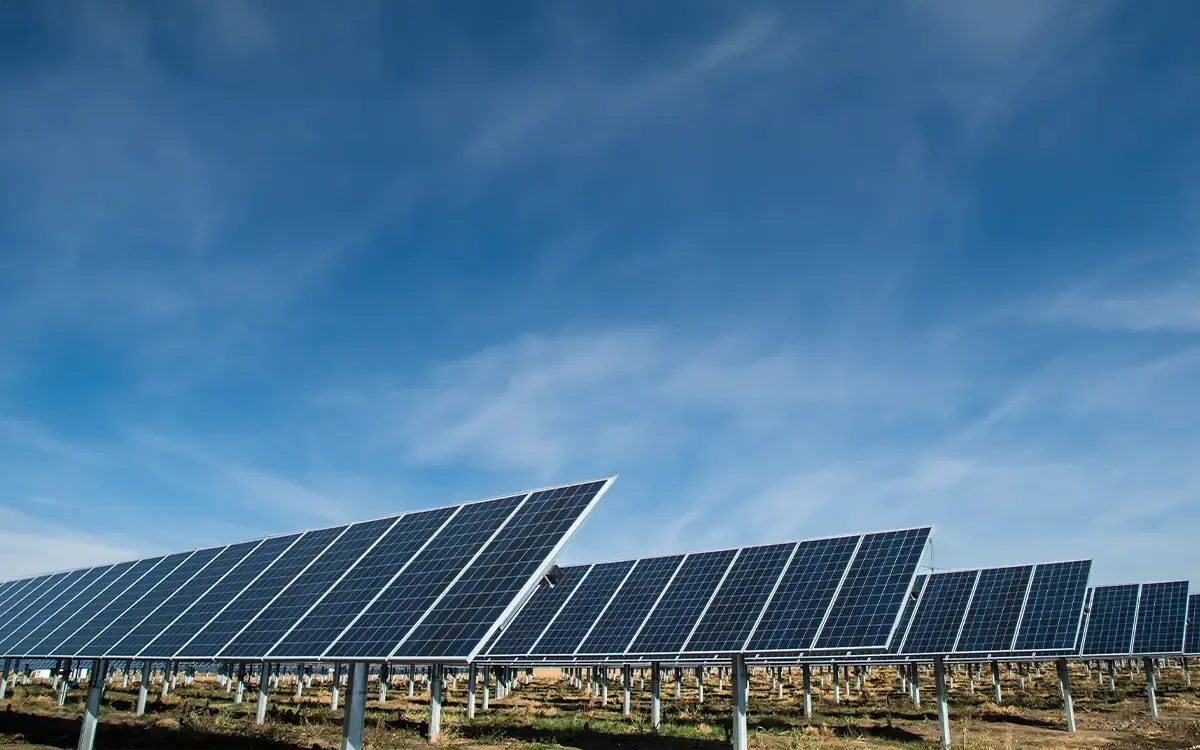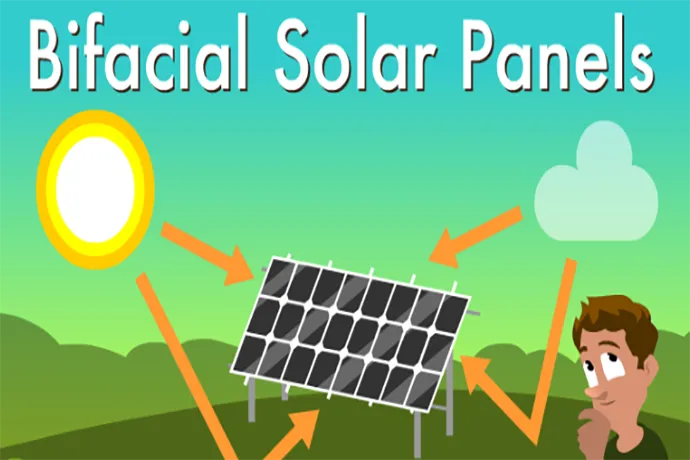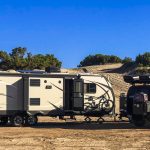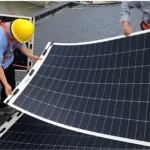Table of Contents
When it comes to installing solar panels, the goal is always to design your system to produce as much solar energy as possible. The technology used in solar panels has come a long way. One particularly exciting technological development is bifacial solar panels. Bifacial solar panels have photovoltaic (PV) cells on both sides, which means they can capture direct sunlight on the front and reflected sunlight on the back.
Although bifacial solar modules have been around since the 1960s, with the development of PERC technology, they are now a disruptor in the solar PV market. While bifacial solar panels are not always practical for rooftop installations, they can generate electricity in exposed applications such as ground mounted systems, solar garages, solar electric fence, and canopies.
Sungold has been involved in solar energy for 15 years. To learn more about bifacial solar panels and whether they are worth considering, read this guide to bifacial solar panels to find out!
What is a bifacial solar panel?
Bifacial solar panels are exactly what their name suggests: solar modules with photovoltaic cells on both the front and back. Like traditional panels, bifacial panels use direct sunlight hitting their front panel to generate electricity. However, bifacial modules also utilize the albedo effect to absorb sunlight from reflective surfaces on the back, such as the ground.
Single-sided panels, on the other hand, are typically installed on roofs with only one working surface facing the sun. In contrast, bifacial modules can receive sunlight on both sides to generate electricity. This is very interesting and is the reason why double-sided panels produce more renewable energy than single-sided panels.
You can use bifacial solar panels in environments that require more energy, mainly large projects such as solar farms. You can also use bifacial panels for residential and commercial purposes because they can be installed on the ground.
Having said that, bifacial panels produce more energy when they are installed over highly reflective surfaces such as stony, sandy, or snowy environments. They don’t work as well on roofs due to the small gap of reflected light. Double sided panels are ideal for swimming pool glass units, rooftop kiosks, pergolas, and gazebos.
It’s important to note that while both surfaces of a bifacial panel absorb sunlight and heat to produce energy, the front absorbs more sunlight than the back. With bifacial solar panels, you can increase the amount of power you generate by as much as 30%. That’s something to be proud of!
How do bifacial solar panels work?
Bifacial solar panels work in the same way as regular solar panels. The sun’s rays are directly absorbed by the solar cells and converted into electricity. Some of the sunlight trapped inside the glass is reflected around until it is absorbed by the solar cells. Finally, a portion of the light passes right through.
However, this is where a double-sided panel differs from a single-sided panel. In a double-sided panel, this lost light has a chance to be re-absorbed by the panel. In this case, the light passes right through and collides with a highly reflective surface, then reflects back into the panel and is converted into solar energy. Since both sides of the solar cell are exposed to sunlight, bifacial solar panels are able to produce more solar energy.

Are bifacial solar panels better?
Bifacial solar panel vs monofacial
The solar cells in a bifacial solar panel are exactly the same as those in a monofacial solar panel. The only real difference is the way the panels are made. Traditional monofacial solar panels have an opaque backing, while bifacial solar panels have a reflective backing or double glazing that holds the solar cells in place. Exposing the back and front of the solar cells to sunlight.
Bifacial panels produce 5% to 30% more electricity than single-sided panels. So if you like having more power, bifacial solar panels are worth having.
And because they are made completely transparent, they are usually frameless, with no metal grid lines. This gives them greater structural integrity and better aesthetics. Bifacial panels are ideal for installations where the back of the solar array is exposed and can capture reflected light, including ground-mounted systems, solar garages, and canopies.
Bifacial solar panel vs monofacial
The answer is yes.
Bifacial solar panels are cost-effective for ground mounting, outdoor structures, and when raised on flat roofs. These applications expose the back side of the panels to the sun so you can generate more power. Dual-sided panels use the same inverter as single-sided panels, so you don’t have to worry about finding specialized equipment.
Here are some key points about bifacial solar panels:
- Solar systems using bifacial panels cost 10 to 20 cents per watt more. However, if used in the right application, you can recoup the additional equipment costs over the lifetime of the bifacial panels.
- When using bifacial PV modules in an off-grid installation, you can meet your electricity needs with fewer panels than with conventional models.
- In cases where the back of the panel is completely hidden (e.g. flush roof installations), it does not make sense to use bifacial panels. In this case, you’ll incur additional equipment costs (because bifacial panels are more expensive), but won’t see a return in additional energy savings. This dynamic can negatively impact the return on investment (ROI) of a solar project.
- Large solar developers often use bifacial panels in commercial settings to maximize energy production per square foot. Bifacial panels are also exempt from specific import tariffs that apply to conventional panels, a major advantage for developers who rely on imports.
Are bifacial solar panels better?
Increased Efficiency
Since a bifacial module can generate electricity from both sides of the panel, there is an overall increase in power generation. Bifacial solar panels can generate up to 30% more electricity than traditional single-sided solar panels. This higher efficiency means that each watt takes up less space, so homeowners can install fewer panels to meet their needs.
More Durable
Because dual-sided panels are frameless and covered with tempered glass on both sides, they are typically more durable. Tempered glass is weather and UV resistant and can withstand high temperatures and strong winds. Due to their durability, bifacial solar panels are expected to have a longer lifespan.
Aesthetics
Bifacial modules come in a variety of designs, including frameless designs. Many consider a full glass frame to be more aesthetically pleasing than single-sided solar panels.
Works well in diffuse light
The extra surface area also means that bifacial panels perform better in diffused light, keeping long-term costs lower than single-sided panels.
Reduced PID
In the case of frameless bifacial panels, solar cells are less likely to suffer from potential induced degradation (PID). This is where the current deviates from its intended path and consequently corrodes the solar panel. In addition, bifacial panels without a metal frame do not require grounding because there are no metal contacts on the outside.
Easy to maintain
Rodents can’t live or hide under bifacial solar panels because they don’t put one side on the surface like regular solar panels.
Longer Warranty
Warranties for bifacial solar panels are typically up to 30 years.
Property value
Installing double glazing can increase the value of your property. If you decide to sell your property in the future, you will get better offers and quotes from realtors and buyers. Reduced BOS (Balance of System) equipment and other associated costs as bifacial modules produce more energy in a smaller installation.

Are bifacial solar panels better?
Initial cost
They are more expensive than regular single-sided panels due to the manufacturing process. Bifacial solar panels can cost up to 10% more than single-sided solar panels, but a good reason for this is that they require more materials to manufacture and will also be more durable.
Regional Restrictions
Bifacial solar panels are not suitable for installations in areas with a lot of shadows or building cover. They are also not suitable for installation over dark, non-reflective surfaces such as dirt or grass.
Installation Costs
Bifacial solar panels are more expensive to install because they are heavier and require specialized equipment to take full advantage of their benefits. Its installation sometimes requires more time and effort than a single panel installation.
The advantages of bifacial solar panels are particularly obvious when compared to their disadvantages. Bifacial solar panels for sale or self-installation are very cost-effective.
Bifacial Solar Panel Costs
According to Marketwatch, bifacial photovoltaic panels add about 10 to 20 cents per watt to the cost of a solar installation. Bifacial panels make sense when the additional power savings outweigh the higher equipment cost. But if that’s not possible, single-sided panels offer a higher return on investment and a shorter payback period.
The average cost of installing bifacial solar panels in the U.S. ranges from $6,000 to $12,000, depending on the number of panels a user needs. When the entire system is considered, as well as installation, parts and labor costs, the overall system cost can be even more.
One piece of good news is that both single-sided solar panels and bifacial photovoltaic modules qualify for a 30 percent solar federal tax credit. The credit allows users to recoup nearly one-third of their initial investment as a tax deduction in the year the panels are installed. Solar cells are also eligible for the tax credit.
How to Install Bifacial Solar Panels and What to Consider?
Installing bifacial solar panels is similar to installing single-sided solar panels in a number of ways, but there are some special considerations to take into account, especially related to the reflective surface on the back side. Here are some suggestions and considerations:
Installation steps:
1. Choose a suitable location: Choose a location for installing bifacial solar panels to ensure adequate sunlight exposure and consider the possibility of shadow coverage.
2. Clean the installation area: Make sure the installation area is clean and free of debris or obstructions. Also, make sure the surface is level.
3. Mounting Brackets: The mounting system for the bifacial solar panels will be installed using roof racks or pole mounts, making sure that the brackets are sturdy and stable to accommodate the weight of the bifacial solar panels.
4. Mounting solar panels: Mount the bifacial solar panels to the bracket, making sure that both the front and the back can receive enough sunlight. Usually, the back side of the bifacial solar panel needs to face a reflective surface or other light-reflective area.
5. Adjust the angle: Adjust the angle of the solar panel according to the height and direction of the sun to maximize the use of sunlight.
6. Connecting Cables: Connect the cables of the solar panels to connect the bifacial solar panels to the inverter and then connect the inverter to the grid.
7. Test the system: Test the electrical connection and performance of the solar system before official use.
Notes:
1. Back Reflective Surface: Make sure the back of the bifacial solar panel can receive light reflection to improve power generation efficiency. Avoid installing in areas with obstructions to prevent reflected light from being blocked.
2. Allow for space: When installing, consider leaving approximately 3-5 inches of space between each row of panels. This will prevent snow buildup during the winter months.
3. Cleaning and Maintenance: Clean the front and back of the solar panels regularly to ensure a clean surface and to improve the efficiency of light reflection and absorption.
4. Safety: Ensure compliance with safety standards during installation and maintenance, which may require specialized personnel.
5. Periodic Inspection: Regularly inspect the solar system connections and mounting structure to ensure everything functions properly.
6. Code Compliance: Follow local building and safety codes and obtain necessary permits and approvals.
When installing bifacial solar panels, make sure to carefully consider these steps and considerations to ensure the safe operation of the system and maximum power generation efficiency. If you are unsure of how to properly install a solar system, it is recommended that you enlist the help of a professional.
Frequently Asked Questions about Bifacial Solar Panels
What is the difference between single-sided and double-sided solar panels?
Single-sided solar panels absorb sunlight through only one side of the panel. Bifacial solar panels absorb sunlight on both sides.
Can I use bifacial panels on my roof?
Bifacial solar panels work best when they are approximately four meters above the ground. This is because the higher the panel is positioned, the more light enters underneath it. As a result, bifacial solar panels are less suitable for residential environments but work well in solar farms, off-grid systems, or commercial.
How much more energy can bifacial solar panels produce?
Bifacial solar panels perform best when the panels are installed near highly reflective surfaces. Examples include swimming pool glass, sand, stone, or snow. The front side of the panel still absorbs most of the sunlight and bifacial modules can increase the amount of power generated by up to 30%. The exact amount of additional energy will depend on the environment surrounding the solar panel.
What are the precautions?
When installing bifacial solar panels, avoid using non-reflective and dark-colored materials underneath the panels, which reduces the reflection of light.







